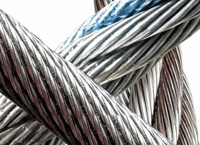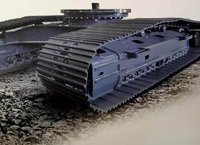- Steel Wire rope and accessories
- Industrial Tools & Parts
- Hoist
DEMAG Hoist
Search Results For DEMAG Hoist| Tarom-boxel |
| Iran |
| 02155429480 |
10 ton demag hoist
The DEMAG 10-ton used electric chain hoist from Germany features a rated lifting capacity of 10,000 kg and is equipped with an electric motor of approximately 15 to 18 kW. This motor is engineered for continuous heavy-duty industrial use and provides stable load lifting with minimal fluctuation. Lifting speed, available in single or dual-speed modes depending on the model, ranges from 2.5 to 6 meters per minute, ensuring precise and safe handling of heavy loads. An electromagnetic brake and motor thermal protection enhance both durability and operational safety.
The hoist chain is made of heat-treated alloy steel, manufactured in G80 or G100 grade, with a typical diameter of 16 to 18 mm. Standard chain lengths vary from 6 to 12 meters according to application needs, offering high tensile strength. The forged steel hook with a safety latch prevents accidental load release. Reinforced mechanical connections and high-quality welding at critical points of the frame ensure structural strength and overall crane stability under heavy loads.
The trolley and horizontal travel system of the DEMAG hoist are constructed from high-strength steel and feature bearings designed to withstand pressure and vibrations. This design ensures smooth, vibration-free movement of loads and enhances l
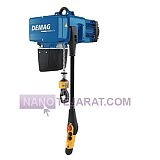
 | |
| Tarom-boxel | 02155429480 |
| lentmarket |
| Iran |
| 09122003350 |
250kg demag hoist conical brake disc
The brake lining used in a Demag 250 kilogram hoist is a critical component that generates the required braking torque and maintains load holding performance under dynamic conditions. This lining typically works with a conical or flat brake disc and supplies a controlled friction coefficient to manage braking energy. Its engineered surface distributes pressure evenly across the disc and prevents localized wear. For a 250 kilogram hoist, the braking torque usually falls within several tens of newton meters, which requires a lining capable of stable thermal dissipation. The material generally combines industrial resin with heat resistant fibers to maintain consistent friction during repetitive cycles.
This lining is produced according to safety standards defined in DIN and EN regulations, ensuring reliable stopping capability even in unbalanced load scenarios. The lining thickness is typically a few millimeters, and the maximum allowable wear is specified by the manufacturer to maintain torque accuracy. A correct lining for a 250 kilogram capacity must support frequent start stop duty with minimal fade. Using an original high density lining preserves nominal braking torque, reduces vibration, and prevents excessive air gap growth. Selecting a lining with uniform compression stre

 | |
| lentmarket | 09122003350 |
| lentmarket |
| Iran |
| 09122003350 |
2 ton demag hoist brake
The brake lining for the 2-ton Demag electric crane is made from asbestos-free friction material, combining phenolic resin and metallic fibers to ensure thermal resistance up to 300 °C and stable friction under heavy load. The initial thickness of the lining is typically between 10 and 12 mm, and the contact surface with the brake disc is designed to distribute pressure evenly, minimizing wear. The length and width of the lining are matched to the disc diameter and mounting spacing, with installation secured using vibration-resistant bolts tightened to a torque of 150 Nm.
The friction grade of the brake lining is calibrated between μ = 0.35 and 0.45 for optimal stopping performance in 2-ton hoists, ensuring precise load control without slippage. The lining design incorporates ventilation channels and longitudinal grooves to reduce operating temperature and extend service life beyond 10 years. The material composition and surface coating provide high resistance to moisture, dust, and corrosion, allowing repeated load cycles in demanding industrial environments.
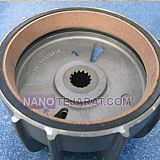
 | |
| lentmarket | 09122003350 |
| takinboksel |
| Iran |
| 021-55422784 |
demag hoist wire rope
The wire rope of the overhead crane must have different quality characteristics, including high tensile strength, proper flexibility, high abrasion resistance and reversibility. In the connection of electric cranes, 6-strand wire ropes are often used, which are used in smaller sizes as steel cores and in larger sizes as hemp cores in order to reduce interlayer wear. The towing wire of the overhead crane is produced both with a standard texture that has higher tensile strength and with a flood type texture that has more flexibility.
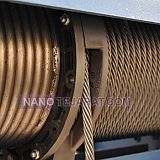
 | |
| takinboksel | 021-55422784 |


